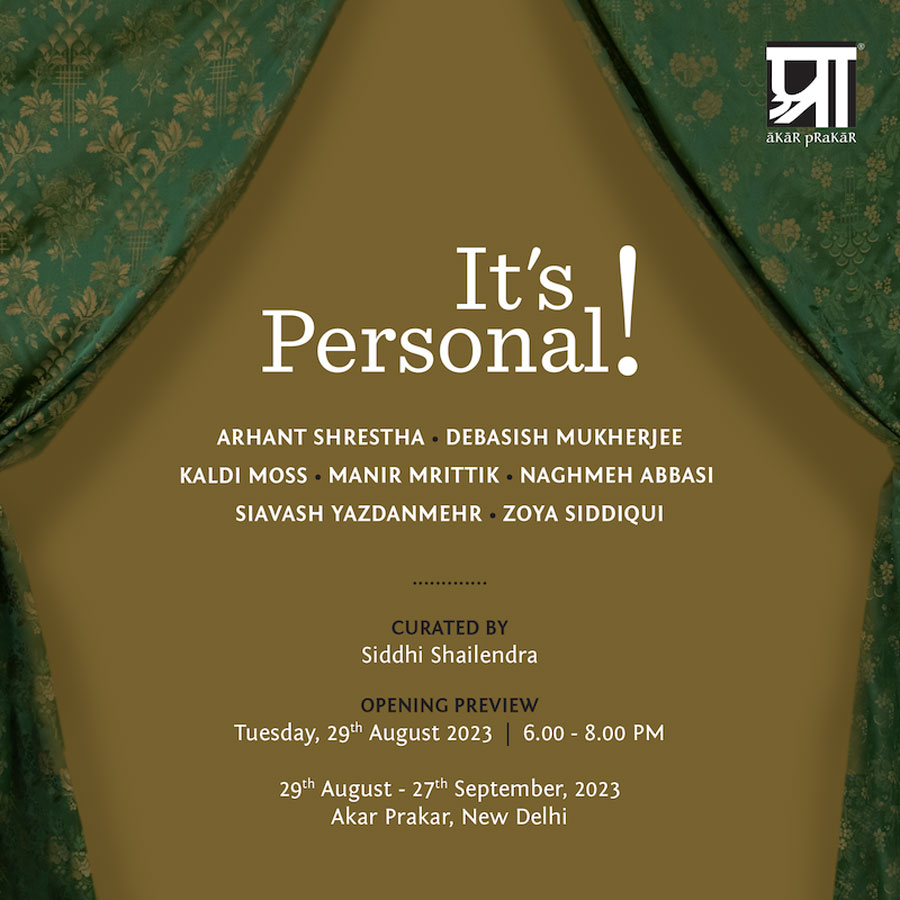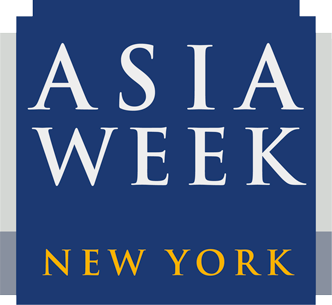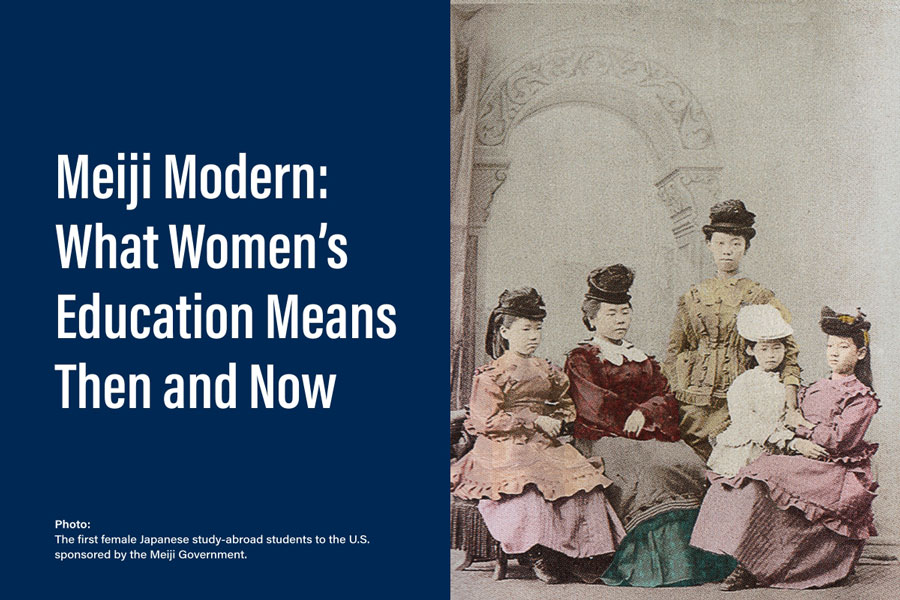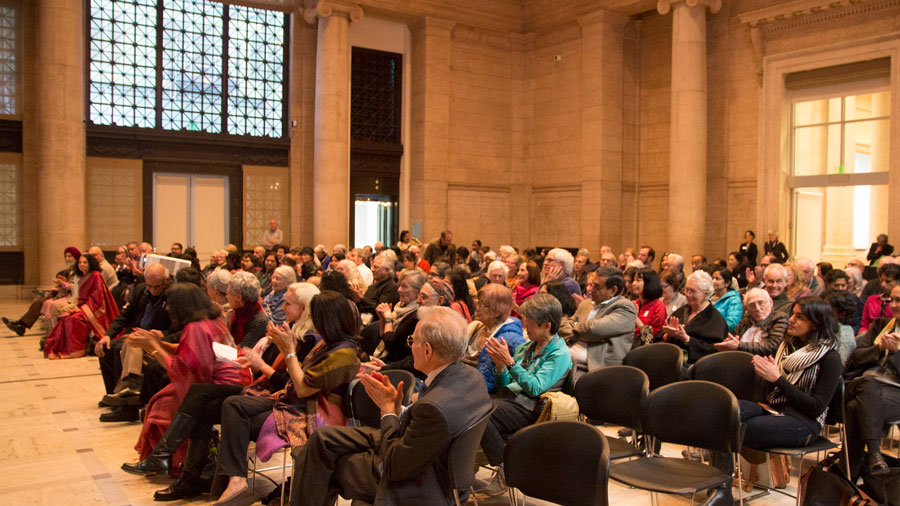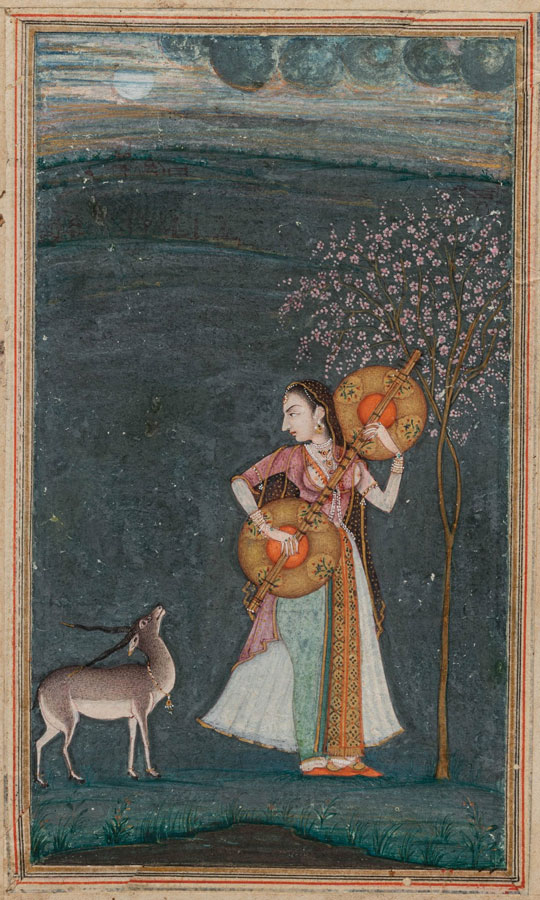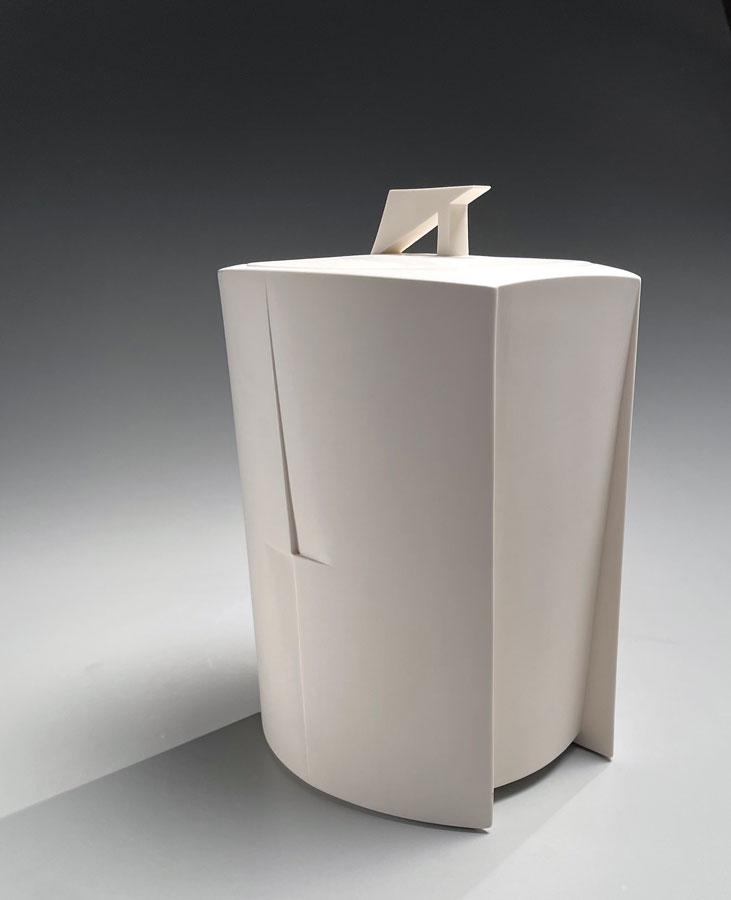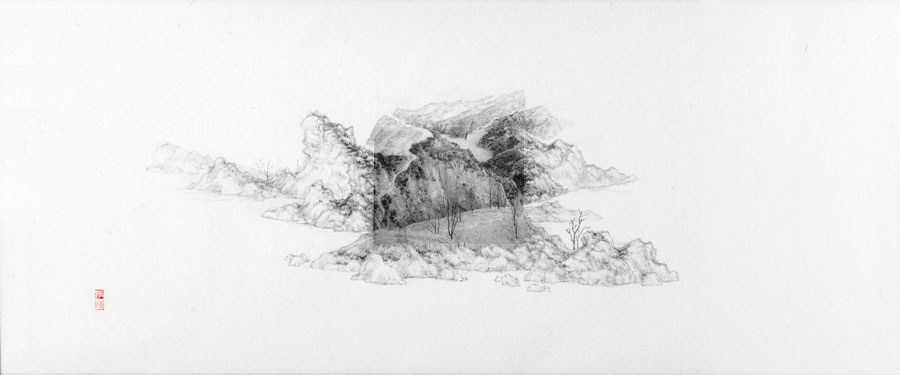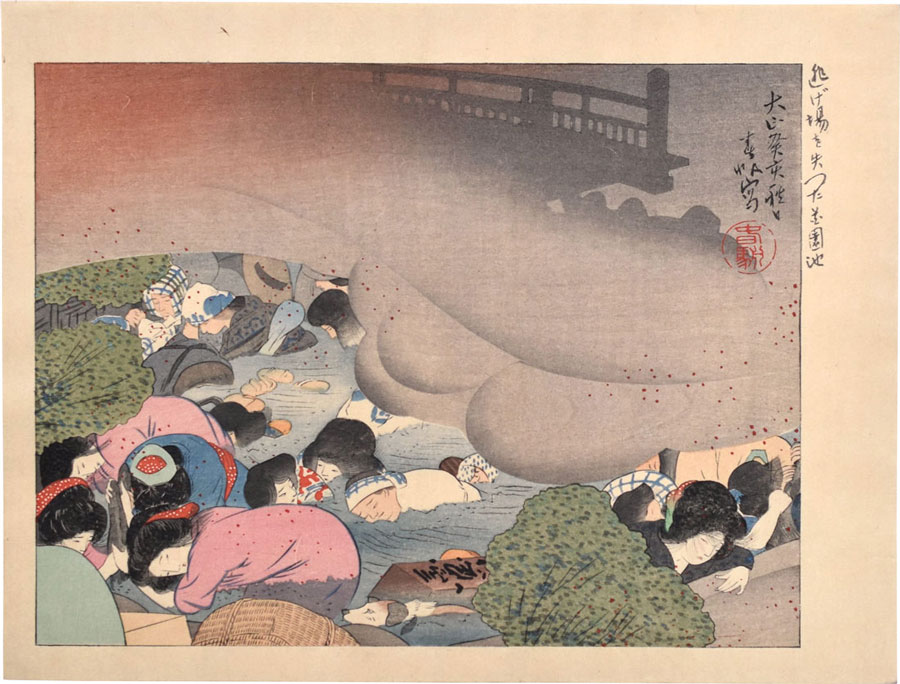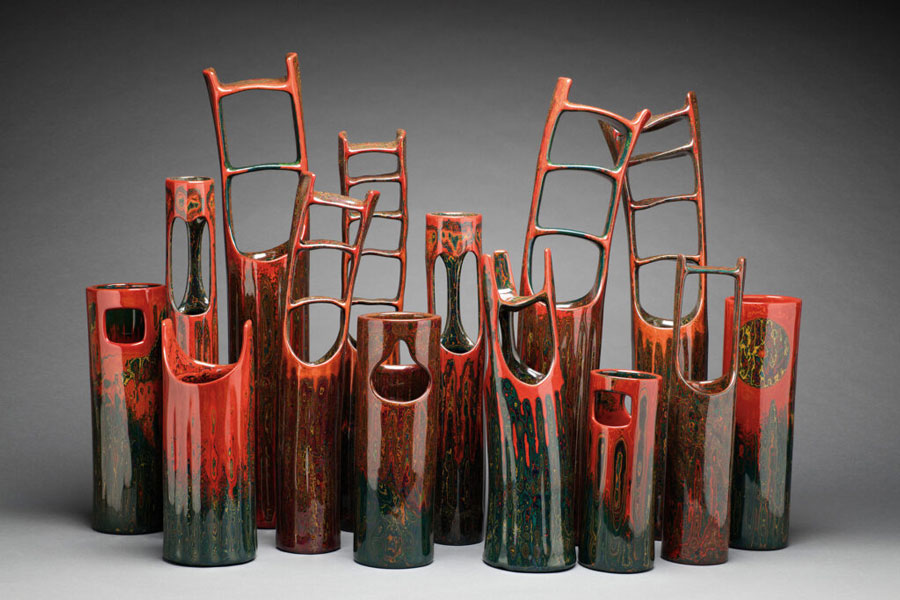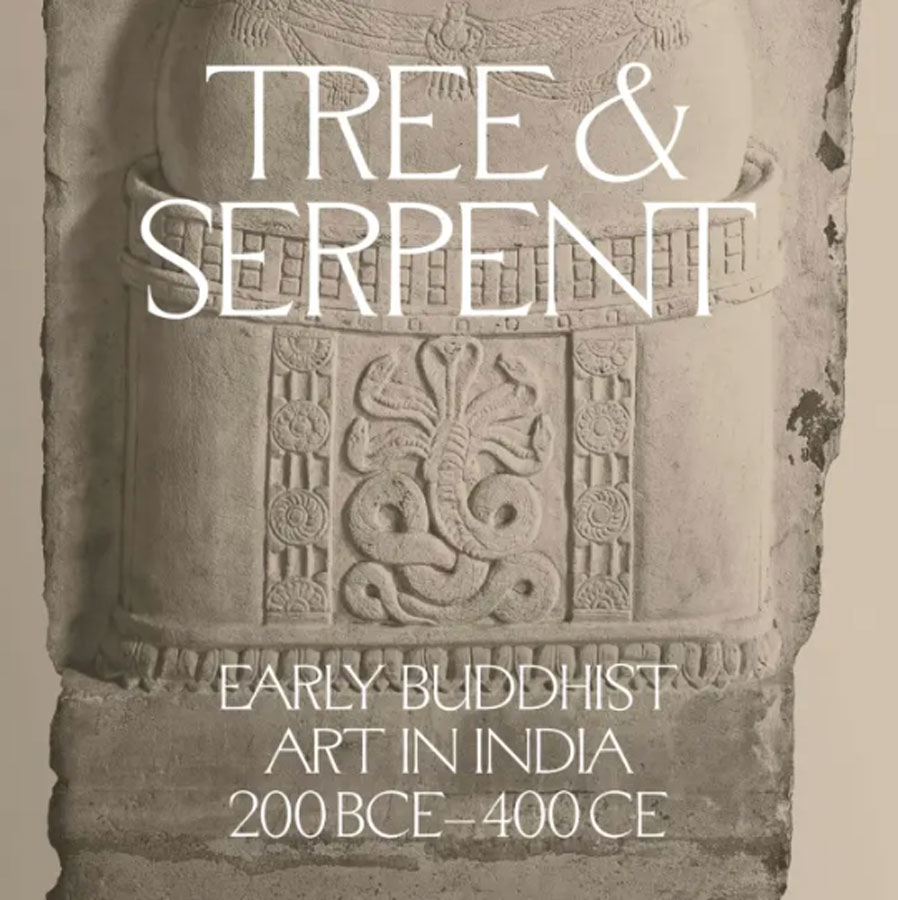Fujinuma Noboru, Group of Sculptures, 2020-21, moso bamboo and lacquer, variable sizes
Fujinuma Noboru
August 18–September 30, 2023
Artist Opening Reception: Friday, August 18, 5–7pm
Artist Lecture: Saturday, August 19, 2–3pm
TAI Modern is pleased to welcome renowned bamboo artist Fujinuma Norboru, Living National Treasure of Japan, to Santa Fe for his second solo show with the gallery. It is already bound to be an exciting weekend in Santa Fe, with the opening reception this Friday, August 18 from 5-7pm, where the artist will be in attendance. Then on Saturday, they will host a talk given by Fujinuma-san from 2-3pm about his process, creative life, inspiration, along with much more..
This exhibition focuses on one of Fujinuma’s signature bodies of work, his mysterious and alluring lacquered bamboo cylinders. The process of making each piece a laborious one. Each carefully selected moso bamboo stalk is harvested, dried for two to three years, and carved into a form that accentuates the shape and individual qualities of that particular piece of bamboo. Then he begins to apply layers of multi-colored urushi lacquer, often upwards of 100 layers per piece. Each layer takes over eight hours to dry, so Fujinuma works on multiple cylinders simultaneously. Once he has finished applying lacquer, Fujinuma then sands through the layers, uncovering different geographies of color and composition. This results in beautifully rich and multihued pieces in a variety of sizes and complexity.
Fujinuma Noboru is an artist of immense talent and skill and has been recognized by the Japanese government as a Living National Treasure, or Preserver of Important Intangible Cultural Properties. This honor is only bestowed upon the greatest traditional artists in their given medium in Japan and has only been given to five other bamboo artists. Fujinuma Noboru was named the sixth Living National Treasure of Bamboo Art in 2012.
Despite his many honors and accomplishments, Fujinuma says, “In terms of climbing the mountain, I have not yet reached the top… One by one, I would like to leave better pieces behind. I strongly hope to create even better works of art.”
For view the exhibition and online catalogue, click here.
